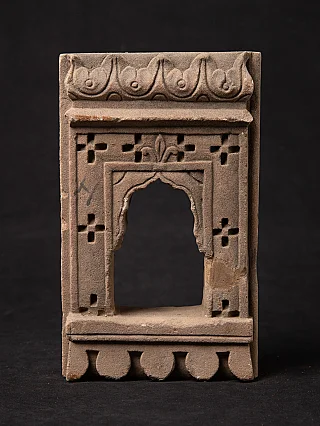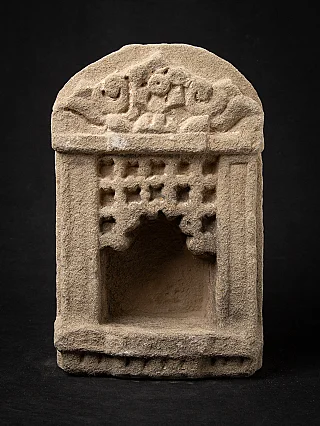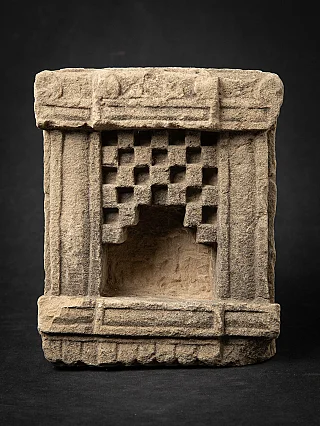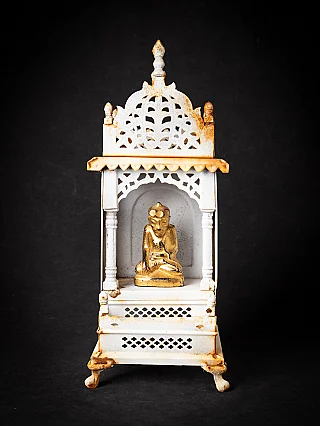Pashupatinath Temple
Author : Peter Vredeveld

The Pashupatinath Temple in the Kathmandu Valley is the most sacred site for Hindus in Nepal.
Nestled within the picturesque expanse of the Kathmandu Valley in Nepal, the Pashupatinath Temple stands as an awe-inspiring testament to the rich tapestry of history, culture and spirituality that defines this region. This sacred shrine holds deep-rooted significance for Hindus worldwide and remains a compelling attraction for travelers eager to explore its enigmatic past.
Pashupatinath, the most prominent sacred temple for Hindus in Nepal, is often referred to as the greatest among the Lord Shiva sites. Located about 5 kilometers northeast of Kathmandu on the banks of the holy Bagmati River, the temple's setting is as spiritually significant as its architecture. The enclosed area of Pashupatinath is proudly listed on the UNESCO World Heritage list, a recognition of its historical and cultural importance. Every year, it draws thousands of devotees, general visitors and tourists from around the world, whether they come for worship, research, or to unravel the temple's storied history and construction.
In the past, only Hindus were allowed to enter and worship within the temple's hallowed grounds, while others could only observe from the banks of the Bagmati River. However, times have changed, and the temple now welcomes people from all backgrounds. Legends surrounding the temple tell captivating stories, such as the one about a herdsman who stumbled upon the divine Linga of Pashupatinath after a remarkable encounter with a miraculous cow. This is a place where myths, history, and spirituality converge, offering an experience that transcends time and boundaries.
Historical background of Pashupatinath Mandir

The Pashupatinath Temple, with its ornate architecture and profound spiritual importance, traces its roots deep into the annals of history. While the exact founding date remains shrouded in the mists of time, the temple's origins are believed to extend back for centuries. Most widely accepted is its reconstruction in the 17th century by King Bhupatindra Malla. To understand the temple's historical background is to grasp the depth of its cultural heritage and its pivotal place in the hearts of the Nepalese people.
Location and Architecture
The Pashupatinath Temple is an architectural marvel situated in the serene beauty of the Kathmandu Valley, just 5 kilometers northeast of the bustling city. It overlooks the tranquil banks of the Bagmati River, a place of spiritual significance for those who cleanse themselves in its holy waters before entering the temple. Its architectural splendor is a stunning example of pagoda-style design that is quintessentially Nepalese. Elaborate wooden carvings adorn the structure, showcasing the time-honored craftsmanship that characterizes Nepalese culture. The temple's double-tiered copper roofs, glistening with a layer of gold, captivate visitors. Silver-sheeted entrance doors beckon to seekers of solace and spiritual knowledge.
Religious Significance

The Pashupatinath Temple serves as one of the holiest places of worship for the followers of Hinduism. It holds the coveted position as a vital part of Hindu spirituality. This sacred abode of Lord Shiva beckons pilgrims from across the globe to seek spiritual enlightenment. To stand before its sacred sanctum and feel the divine presence is a transcendent experience.
Mythological Legends
This sacred haven is more than just a temple; it's a treasury of myths and legends. Among the most cherished narratives, one suggests that the temple's roots can be traced to the 3rd century BC, during the reign of the Somadeva Dynasty, although it is more commonly linked to construction in the 13th century. The divine aura surrounding the temple finds resonance in the mythical legend of a herdsman who stumbled upon the sacred Pashupatinath Linga. Additionally, the temple is intrinsically connected to the myth of Lord Shiva and his consort, Sati. It is believed that Sati sacrificed herself in the flames of a yajna (sacred fire) after her father, Daksha, insulted Shiva. In his grief, Shiva carried Sati's lifeless body and it is said that her divine parts fell in different locations, becoming sacred Shakti Peethas, places of divine power. At the Pashupatinath Temple, it is believed that Sati's essence resides, and her sacrifice symbolizes the eternal cycle of life, death and rebirth—a profound representation of Hindu philosophy.
Worship and Rituals
At the heart of the Pashupatinath Temple lies a plethora of religious rituals and ceremonies. It serves as a sacred sanctuary where worshipers gather to show their reverence to Lord Shiva, enveloped in the enchanting chants of age-old Vedic hymns and the captivating echoes of temple bells. Devotees and priests engage in intricate rituals that connect them to the divine. The spiritual journey at Pashupatinath is a blend of personal reflection, communal worship and reverence for the divine.
Sacred Structures
Within the temple's sprawling complex, myriad sacred structures await. The main temple, adorned with architectural splendor, serves as the primary focus for worshippers. Surrounding shrines and the Bagmati River ghats offer additional sites of reverence and reflection. The temple complex is a network of sacred spaces, each with its unique significance.
Art and Iconography
As you traverse the temple's hallowed grounds, you'll encounter a wealth of artwork and sculptures. These masterpieces narrate stories of deities, sacred motifs, and spiritual symbols. Lord Shiva, the presiding deity, is depicted in various forms, each resonating with deep symbolism. The art and iconography of Pashupatinath communicate profound spiritual themes, inviting contemplation.
Preservation and Restoration
Throughout the years, dedicated initiatives have been undertaken to safeguard and rejuvenate the Pashupatinath Temple. The diligent endeavors of conservationists and devoted individuals guarantee the enduring magnificence of the temple. Recent restoration projects have reinvigorated the temple complex, maintaining its majesty. The temple's preservation is a testament to the enduring commitment to protect its historical and spiritual heritage.
Cultural and Spiritual Impact
The Pashupatinath Temple is not just a spiritual abode; it's an integral part of Nepali culture. It has profoundly influenced the spirituality and way of life of the local populace, nurturing the roots of Hinduism in the region. The temple's enduring cultural impact is woven into the very fabric of Nepalese society.
Visitors and Pilgrimage

For the countless pilgrims and tourists who visit this divine sanctuary, the Pashupatinath Temple offers a transformative experience. The temple's atmosphere, the fervor of its worshipers, and the celestial surroundings combine to evoke a deep sense of spirituality. The temple's importance as a destination for pilgrims and a center for spiritual seekers serves as a testament to its timeless allure.
Festivals and Celebrations
Throughout the year, the Pashupatinath Temple reverberates with the echoes of festivals and celebrations. These vibrant events mark significant occasions in the Hindu calendar and provide a unique glimpse into the spiritual fervor that defines the temple. Festivals such as Maha Shivaratri draw throngs of devotees, and the temple comes alive with music, dance, and vibrant processions.
Modern Relevance
Even in the modern world, the Pashupatinath Temple remains a vital cornerstone in the lives of its worshipers. It functions as a spiritual compass, leading them on a path towards enlightenment and inner tranquility. Visitors from diverse backgrounds find solace in its tranquil atmosphere and the timeless wisdom it imparts.
Conservation Efforts
The enduring legacy of the Pashupatinath Temple has earned it a well-deserved place on the UNESCO World Heritage List. These preservation endeavors are a testament to the temple's global significance and the commitment to its safeguarding. A dedicated team of conservationists and devotees works tirelessly to ensure that the temple remains an enduring symbol of cultural and spiritual heritage.
Share this page














































